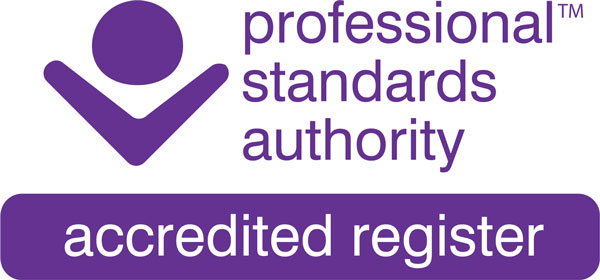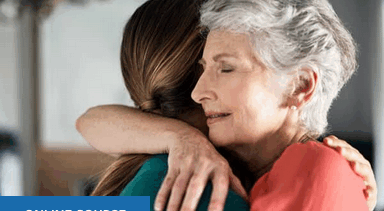An HG lens on Bereavement
Julia Welstead looks at the impact of bereavement and grief
Death. It is an inevitable consequence of life: it happens to all of us. And yet, in this age of general openness about most of our other bodily functions, death remains a subject that we find difficult to contemplate, accept or openly discuss.
To my mind there are four facets to the subject: dying, death, bereavement and grief, and two perspectives: that of the dying person and that of those they leave behind, living with the loss. This article focuses on bereavement and grief. (I will discuss dying and death in a future article.)
There’s a bit of confusional use of the twin terms, grief and bereavement, which is worth clarification. In conversation with a friend we came up with the following distinction:
Bereavement is a state of being deprived of something or someone, especially through death, whereas grief refers to our emotional response to the loss.
And we also agreed that:
Bereavement can be viewed as an internal, psychological state of being, often not easily visible to other people unless one wears a black armband or black clothing: whereas grief tends to be more behavioural, often visible to others.
As our definitions suggest, loss need not be through death. We can grieve a broken relationship or the departure of a child into adult life, or the end of our career, or even the loss of a personally meaningful inanimate object or a way of life, such as when a friend of mine watched, helpless and huddled in nothing more than a blanket, as her house was gutted by fire.
Bereavement can be seen as when something is wiped off what I call our ‘map of reality’. We all have this internal map, built by our brain to enable us to understand the world around us. We can imagine it as being like an ordnance survey map, or an elaborate and colourful painting or tapestry, or a flow chart or architectural drawing.
Whatever our preferred image, the point is that the paper, or canvas, or warp and weft, is entirely ours, but other people add lines, placenames, splashes of colour or stitched patterns, and the extent to which they do this directly correlates with the enormity of our sense of loss and grief when they go, leaving either a small hole (perhaps an aged aunt with whom you haven’t had much contact since childhood) or a huge gaping crater (a spouse, or a child, with whom you have been sharing love, laughter and life on a daily basis, with shared hopes and plans for your future together).
When our map of reality is torn, our emotional, survival, brain immediately goes on the alert as it tries to make sense of the change in circumstances, pattern matches to anything similar in our past, and begins to work out what action is required to ensure our own survival and to ‘mend the map’. That may come across as a rather clinical description of the process of bereavement, but I have found that understanding what the brain is doing at times like this helps people to also understand their feelings and begin to work out how to recover.
Look up bereavement and grief, or read any book on the matter, and you’ll come across the ‘stages’, which usually go something like: shock, denial, grief, anger, acceptance. Speak to anyone who has been through significant loss and grief and they will say it was nothing like that at all, and will come up with their own list of stages. I have been through this myself and would agree only with the initial ‘shock’ element, and perhaps with a final ‘acceptance’, though I still regularly revisit and question that acceptance, a decade on.
In between shock and acceptance I experienced myriad feelings, which belie categorisation or order, but include anger, frustration, sadness and regret. These added ‘darts of suffering’ (as a Buddhist might term them) can cause undue weariness and lead to depression if we don’t name and tame them. I was greatly helped in getting through this by an HG therapist who specialises in bereavement.
An HG newsreader with whom I am in touch has described his, very much ongoing, set of stages as shock, detachment, attempts to reconnect, bewilderment, grief and loneliness, and he stresses that,
I’m still going through them, so the list is open-ended and, clearly, they are not a linear progression.
He came across some recent research suggesting that the stages of bereavement involve either resilience and recovery, or chronic dysfunction with delayed grief or trauma, as if there were two options – recover or forever wallow – which we both deemed far too simplistic a conclusion on such a multi-faceted matter. For instance I consider myself to be ‘recovered’ from my bereavement, whilst also accepting that the hole in my ‘tapestry’ will always be there, albeit now carefully stitched around to prevent further rips.
Instead of stages, it is more useful to look at bereavement and grief in terms of our essential emotional needs. If we were to do an emotional needs audit (ENA) immediately after a significant rip in our map of reality, we would see a drop in several of those measures. For instance:
Security: when we lose someone we share our life with, our sense of security is going to be rocked to the core. We will no longer recognise or understand the shape of our daily existence and will worry about what is going to happen next. In a very different way, the same can be said of losing the house we live in, whether through fire, flood, war or repossession.
Control: goes hand in hand with security and we will feel as if we have lost control over our lives when our map alters. Our language is littered with metaphors for this: losing our bearings, feeling rudderless and adrift at sea, with no wind in our sails, being in the doldrums. (Our preponderance of sailing metaphors in the English language come from our seafaring history, and I assume there will be similar land based metaphors from landlocked nations!)
Connection: if the loss is of a loved one, our need for a shared, intimate, ‘warts-and-all’ relationship is immediately denied us and that score will plummet to zero. Ironically, the one person with whom we could have talked openly about how we feel, has gone. Beyond that, often losing a partner means we also find it harder to socialise with our wider group of friends and risk becoming disconnected, isolated and lonely.
Attention: again this goes hand in hand with connection. When the person with which we gave and received most attention has gone, we will suddenly lack that essential attention exchange and it will initially be hard to find elsewhere. In the very early stages there can be a lot of attention on offer from concerned relatives, friends and professionals, not all of this will be easy to accept, and in any case it tends to tail off fairly rapidly. Nobody wants to be reminded of their own mortality and bereaved people often find that those around them, whilst well-meaning, are hoping they will ‘get over it’ and ‘move on’ as soon as possible.
Status: In the case of the death of a relative one’s status as spouse, parent, offspring or sibling changes. With the loss of a job, or at retirement, one’s professional standing can alter. Another aspect of our map of reality is that it depicts how we see ourselves and how we perceive that others see us in the world, and any change in that will knock our confidence.
Sense of meaning: Any significant life-changing event will also alter our sense of meaning, of how we see our life panning out, and through grief we may well ask questions like, ‘what’s it all for?’ and ‘why should I carry on?’ until and unless we can find a new purpose, new goals and therefore new meaning.
Whilst this is by no means exhaustive, I hope this list illustrates how useful it can be to look to one’s essential needs, understand what is missing and begin – when the time is right – to find new ways to get those vital needs met in balance.
When is the time right? When does a necessary period of grief (a vital time of healing) tip into a more chronic and debilitating state that threatens to prevent you from ever leading a full life again? That, of course, is different for every individual and every situation and can only be detected and assessed by the person themselves, or by any family or friends looking on, often with the professional help of an effective therapist, who will be able to see the situation from a more objective stance.
For me, the most useful aspect of the work I did with an HG therapist following my bereavement (and I didn’t do this until two years after the event) was that I could ‘borrow her brain’ when mine was in emotional hijack, enabling me to understand the situation on a more logical level and work out my next steps accordingly. Her brilliant ability to listen and reflectively reframe how I was feeling also helped me to feel calmer and regain control of my life.
She did not merely help me to pick up the pieces and cope in a practical way, but instead showed me how to look clearly and fearlessly at what had happened, at how it affected my life, and at how I could weave new strengths into my map of reality and help my children to do the same. For that I cannot thank her enough.
Nov 2018


